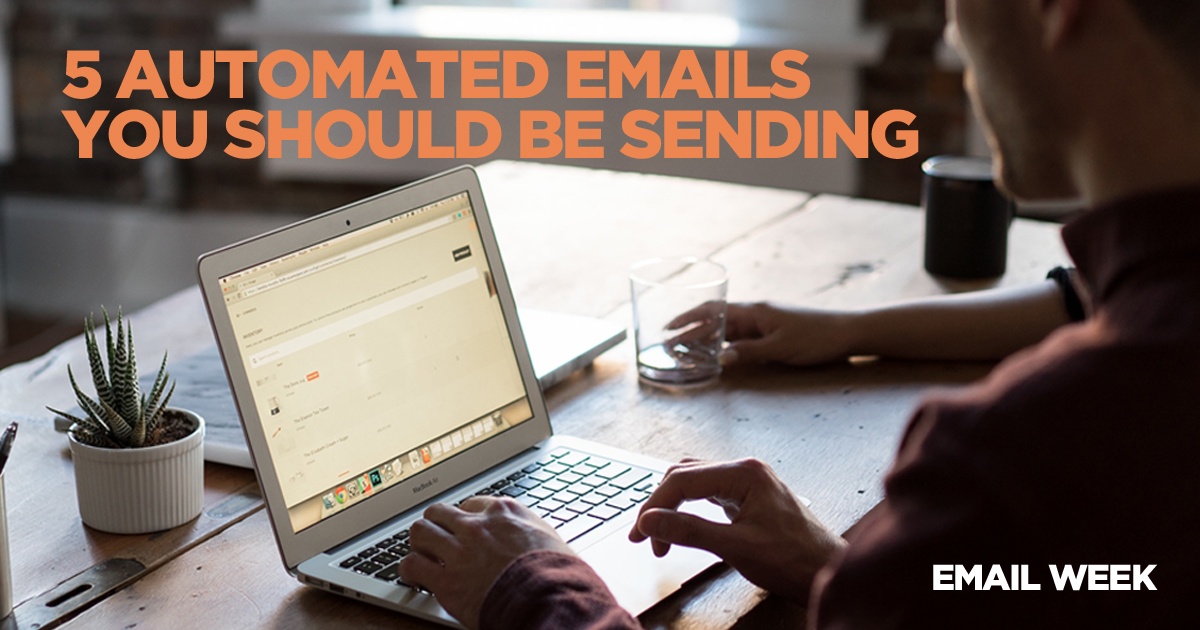
This week is Email Week, so throughout the week we’ll be posting insights about the various aspects of email marketing.
Email automation and workflows save companies and businesses time by sending out emails automatically depending on different triggers. It also allows for personalization, once contacts are correctly segmented, and a better understanding of what contacts connect with.
Once you’re aware of the benefits of adding automation and workflows to your email marketing strategy, you can start to implement the most relevant aspects. Here are some commonly used email automations to get you started.
Email Newsletter
At its most basic, an email newsletter updates readers on the happenings of your company or organization. It can also educate your audience by sending out the most recent blog posts or letting them know about an upcoming webinar. Sending on a weekly or monthly basis is preferred, as you don’t want to inundate your audience with more emails than they’re comfortable with.
Who should use it: companies and businesses across industries, non-profit organizations
Form Follow Up
If your website uses content marketing to collect consumer information via landing pages and forms, a follow up email is a great way to stay engaged with a new contact. A automatic follow up email can resend the just-downloaded content immediately or can send other relevant content a couple of days later. Either way, follow up emails can help gauge interest.
Who should use it: companies and businesses across industries, non-profit organizations who utilize gated content
Event Reminder
If you host online events, like webinars, or even in-person events, it’s a good idea to send a reminder to participants that they’ve filled out a registration form to attend. You can send out a one-time reminder the day before the event or choose to send multiple reminders in the weeks leading up to the event. If the webinar is recorded, you can also send out a follow up with the recording so participants can view again or search for that quote they didn’t have a chance to write down.
Even if people didn’t attend the event, you can still utilize that information to communicate with them in a different way than those who did, while still moving them down the sales funnel.
Who should use it: companies and businesses across industries, non-profit organizations who host online events
Transactional
As online shopping becomes more common, not only for retail but for services and B2B as well, transactional receipt emails are a necessity. Know what type of buyer you have: do they need a purchase order, an invoice, or a receipt? Consumers want a record of the transaction, plus it gives companies another touchpoint with their customers. A transactional email can have links to recommended products or promote social sites.
Who should use it: companies and businesses with e-commerce websites; non-profit organizations with online donation capabilities
Abandon Cart
A more sophisticated transactional email, the abandon cart email works well when a registered customer has logged in, placed something in their online cart, and then left the website before the purchase. An email reminding them to finish the transaction may be enough for them to complete the purchase, as 66% of cart conversion comes through email.
Who should use it: companies and businesses with e-commerce websites
As we step away from the brick and mortar stores and the benefit of human touchpoints, automation gives us the ability to implement this type of personal service. The personalization automation and workflows allow speaks to people where they are and responds to their individual needs. Ultimately this connects customers to brands and gives a deeper experience.
{{cta(‘bd04b5d0-4b5c-439f-ad25-2a5ba39d073c’)}}
